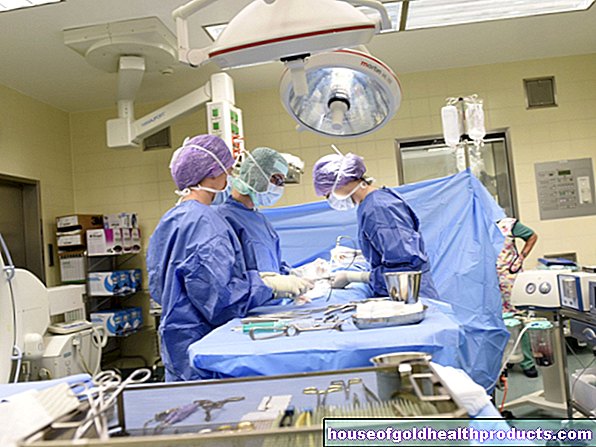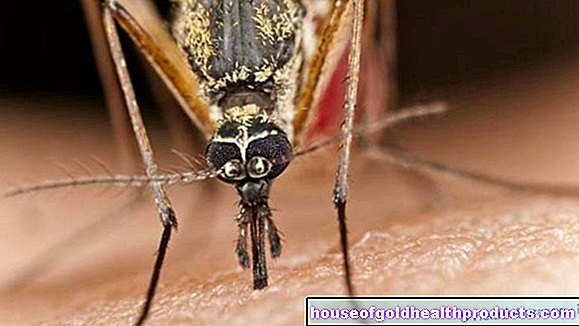vulva
Eva Rudolf-Müller is a freelance writer in the medical team. She studied human medicine and newspaper sciences and has repeatedly worked in both areas - as a doctor in the clinic, as a reviewer, and as a medical journalist for various specialist journals. She is currently working in online journalism, where a wide range of medicine is offered to everyone.
More about the experts All content is checked by medical journalists.The vulva is the female pubic area, i.e. the outer area of the female genitalia. These include the vaginal vestibule, the labia and the clitoris. The vulva is an important erogenous zone. Read everything you need to know about the vulva here: anatomy, function and health problems such as inflammation, infections and cancer!
What is the vulva?
The vulva (female pubic) is the outer area of the female genitals. It is one of the primary sex organs in women. The vulva includes:
- the pubic mound or venus mound (mons pubis): the fat pad over the symphysis region
- the great outer labia (labia majora)
- the small inner labia (labia minora)
- the clitoris (clitoris)
- the vaginal vestibule
The cleft formed by the two large labia is called the pubic cleft (rima pudendi). The union of the labia majora in the anterior area is known as the anterior commissure, and in the posterior area as the posterior commissure.
The anterior part of the labia minora merges into a small ligament (frenulum clitoridis) that surrounds the clitoris and into the clitoris itself. In its rear area - towards the perineum, which is also the end of the vulva - the labia minora unite.
The vaginal vestibule between the labia minora is the common vestibule into which the vagina and urethra open. In addition, all ducts of the glands that are located in the area of the vulva open here. The Bartholin glands open on the inside of the labia minora and secrete a gray-white secretion into the vaginal vestibule. The ducts of the paraurethral glands open next to the opening of the urethra.
Vulva: Age-related changes
The vulva changes in the course of life with the amount of sex hormones produced. During puberty, it enlarges and becomes more pigmented. The individual structures emerge more clearly, especially the clitoris and the large and small labia. In addition, the pubic hair grows.
If hormone production decreases with increasing age or after surgical removal of the ovaries, this leads to atrophy of the vulva, i.e. to tissue atrophy.
What is the function of the vulva?
The vulva is an important erogenous zone. The clitoris is considered the center of sexual arousal. The labia protect the vaginal entrance and supply the delicate mucous membrane with moisture via glandular secretions.
Where is the vulva located?
The vulva is the outer area of the female primary sex organs. It extends from the mons pubis to the outer and inner labia to the perineum (transition area between vulva and anus).
What problems can the vulva cause?
Inflammation of the vulva (vulvitis) affects the entire area of the external genitalia. It can be infectious. Such infections in the vulva area are always characterized by itching, burning pain, redness, swelling and discharge, regardless of the cause, and occasionally also by swelling and pain of the inguinal lymph nodes. However, vulvitis can also have non-infectious causes.
A distinction is made between primary and secondary vulvitis:
Primary vulvitis
It includes inflammation that is confined to the vulva. The cause is often an allergic reaction to soaps, detergents, intimate sprays, synthetic clothing or medicines. Primary vulvitis can also be a psychogenic development.
Bacterial infections of the vulva include bartholinitis and folliculitis. Bartholinitis is a common disease affecting the vulva. It is an inflammation of the duct of one of the Bartholin's glands on the inside of the labia minora. It causes severe pain and swelling on one side, which can be the size of a tennis ball.
Folliculitis is an inflammation of hair follicles in the area of the female pubic area. It can expand into an abscess, and multiple foci of inflammation next to each other can melt together to form a carbuncle, which then has to be surgically removed. The main cause in such a case is diabetes mellitus as the underlying disease.
Viral infections of the vulva are also possible, for example with herpes viruses (genital herpes) or papilloma viruses (genital warts).
Herpes virus infection is one of the most common sexually transmitted diseases. The viruses are transmitted by smear or droplet infection. A genital infection with the herpes virus during pregnancy can be transmitted to the child via the placenta or ascending. Most often, however, the child is infected during childbirth - generalized herpes neonatorum then develops, which affects 40 to 50 percent of babies and has a high mortality rate.
An infection with the human papillomavirus (HPV) causes genital warts in the vulva. Of the more than 100 different types of papillomavirus, around 20 affect the genital area. A distinction is made here between “low-risk” and “high-risk” genotypes, which can cause benign (benign skin warts) and also malignant changes (including cervical cancer).
Secondary vulvitis
Secondary vulvitis is when the inflammation of the vulva originates from the urogenital area or the anal area. The triggering diseases can be vaginal inflammation (colpitis) or pinworm infestation (oxyuriasis).
Other diseases in the area of the vulva
A vulvar cancer is a malignant growth in the area of the vulva and rarely occurs. In most cases it is a so-called squamous cell carcinoma. Other malignant tumors (such as basal cell carcinoma, malignant melanoma = black skin cancer) and benign tumors in the vulva are also possible.
In addition, tumors that grow in other parts of the body (such as cervical or rectal cancer) can cause daughter settlements (metastases) in the vulvar region.
Tags: womenshealth sleep fitness





























